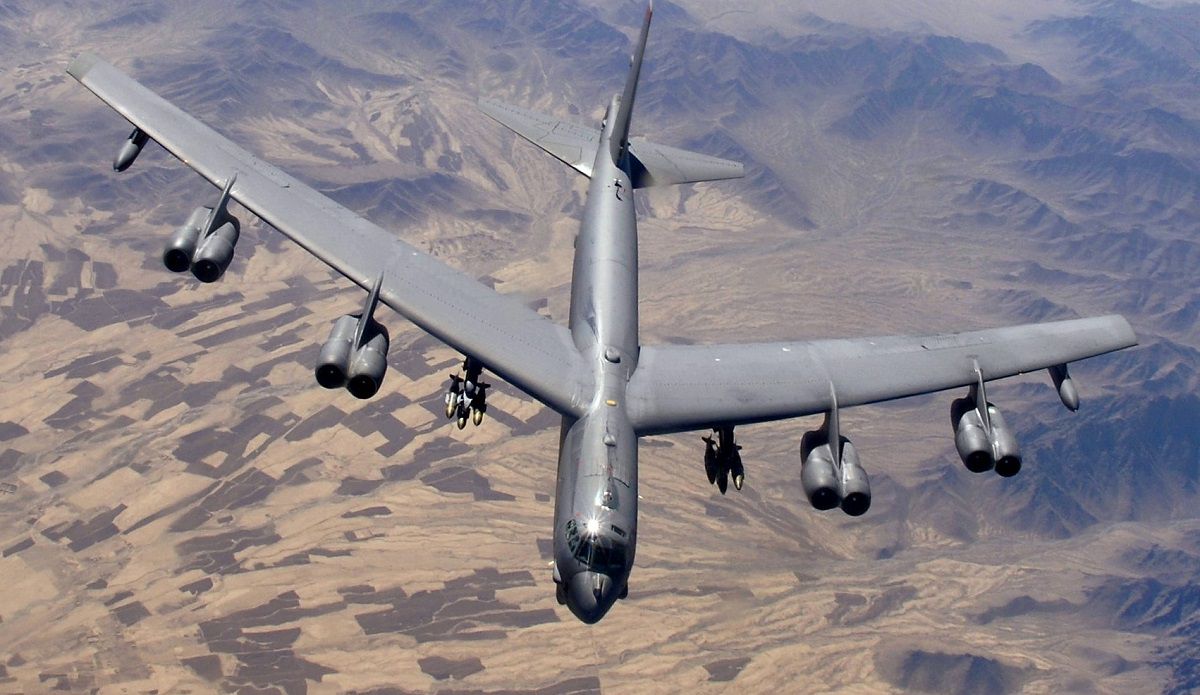In a major move toward modernizing the B-52 fleet, a bomber belonging to the 307th Bomb Wing has reached a Boeing facility in San Antonio to begin the installation process for the advanced Active Electronically Scanned Array (AESA) radar system.
‘Groundbreaking Milestone’: US Uses Real-Time Magnetic Navigation On Its C-17 Globemaster; Goes Beyond GPS
As per the official press release issued by the US Air Force on May 30, a B-52 bomber arrived at a Boeing Co. facility in San Antonio on May 25, marking the commencement of the integration process for the AESA radar as part of the Air Force’s B-52 Radar Modernization Program.
The installation of the AESA system represents an essential upgrade for the B-52 fleet, marking “one of the largest upgrades” in its history. The project is estimated to cost around $2.8 billion, with initial operational capability anticipated to be achieved by 2027.
Col. Louis Ruscetta, Senior Materiel Leader for the Air Force Life Cycle Management Center’s B-52 Program Office, said that the arrival of this aircraft holds immense significance as it marks the beginning of a crucial phase in the modernization of the B-52 fleet.
Ruscetta, who leads the Radar Modernization Program and oversees the overall efforts to upgrade the bomber, stated, “AESA will replace 1960s radar technology and greatly increase the navigation and targeting capabilities of the B-52 in higher threat areas.”

Besides enhanced situational awareness and improved navigation and targeting capabilities, the AESA radar offers adaptability by allowing software modifications to incorporate new capabilities to address future threats.
The installation process is being carried out with the involvement of Boeing and Raytheon. The service said that the collaboration between Boeing and Raytheon is vital for successfully implementing the AESA system.
As the original equipment manufacturer (OEM) for the B-52, Boeing’s extensive experience and deep understanding of the platform is crucial in expediting the installation process. Additionally, Raytheon’s expertise in radar technology makes them a valuable partner in this effort.
This partnership aims to provide an off-the-shelf solution, minimizing the need for extensive development and testing, thus reducing overall timelines and facilitating efficiency.
New Radar System For B-52
The iconic B-52 Stratofortress, affectionately known by its playful nickname “Big Ugly Fat Fellow” (BUFF), is undergoing significant modernization. The modernization program will involve the installation of new electronics, avionics, radars, and engines.
Chinese J-16 ‘Emulates’ Russian Su-27 Fighter; Comes Dangerously Close To Knocking Out US Air Force Spy Aircraft
According to the fiscal 2024 budget documents of the Air Force, the B-52H bombers will be re-designated as B-52Js after they are fitted with the new Rolls Royce F130 engines.
This massive overhaul aims to enhance the capabilities of America’s oldest and most capable strategic bomber, ensuring its continued relevance and effectiveness in the evolving global security landscape.
The US Air Force said sustainability is crucial to this effort, as the outdated radar system is no longer viable. Introducing AESA technology will significantly improve the B-52’s combat capabilities, particularly in engagements with near-peer adversaries.
The new radar system will enhance long-range standoff capabilities and optimize the aircraft’s lethality, ensuring its effectiveness in future missions.

In 2020, in an interview with Air Force Magazine, Maj. Gen. Andrew J. Gebara, senior materiel leader for the program, highlighted the need to replace the outdated AN/APQ-166 radar on the B-52H strategic bomber.
The aging analog/mechanical systems of the current radar present limitations inherent in older technology.
To address this, a new AESA (active electronically scanned array) radar developed by Raytheon will be installed on the B-52H, offering advanced capabilities and overcoming the shortcomings of the older radar system.
As part of the B-52 upgrade program, the replacement radar for the aircraft has been designated as APG-79B4.
This radar system, selected in July 2019, is based on Raytheon’s APG-79/APG-82 family of systems currently utilized in the Navy’s F/A-18 Super Hornet.
The new radar also incorporates elements from the F-15E Strike Eagle, boosting its capabilities and adaptability for the B-52. The upgraded radar system will include improvements such as better mapping and targeting range.
This will enable the bomber to accurately locate and engage targets over a larger area. Additionally, the radar system will have an increased capacity to engage multiple targets simultaneously, allowing for more efficient and effective mission execution.
The system also can enable Air Force Global Strike Command (AFGSC) to reduce the B-52 crew size from five to four Airmen, as per the Air Force’s statement.
While no definitive decisions have been made yet, the Air Force acknowledges that implementing various upgrades in the aircraft could eventually lead to a reduction in crew size.
- Contact the author at ashishmichel(at)gmail.com
- Follow EurAsian Times on Google News




